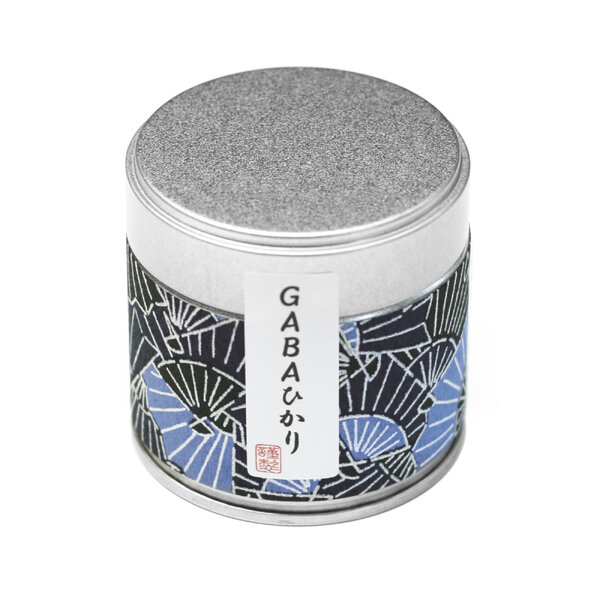Japan Gaba Hikari Funmatsucha - 30g
-
Harvest Year 2024
-
Country of Origin Japan
-
Type of Tea Green Tea
-
Total Price: 25.00 € (including VAT)
This Japanese green ground tea comes from the picturesque Shizuoka region near Mount Fuji. The leaves are of premium quality from the Okumidori cultivar, which guarantees a rich flavour. The bushes were shaded in the traditional way for 1 month before harvesting.
It is made using a special method in which part of the processing of the tea leaves takes place without access to air, the so-called "anaerobic process", which increases the content of gamma-aminobutyric acid (GABA) in the tea leaves. This method was first developed in Japan in 1983 by Dr. Tsushido and his team. The result is a tea with a distinctive character and a unique production technology.
In order for a tea to be called GABA (from the English gamma-aminobutyric acid), it must contain at least 150 mg of GABA per 100 g of leaf. In Japan, GABA teas have an average of 200 mg / 100 g. According to laboratory analysis, our GABA teas reach up to 420 mg GABA / 100 g.
This product is a more ecological and economical alternative. It does not include a tea can, only matcha tea in a metal bag.
Origin: Japan
Cultivar: Okumidori
Type: green tea (GABA)
Ingredients: 100% green tea (Camellia sinensis)
THE TEA IS FROM OUR OWN PRODUCTION.
REGULATION (EC) No. 1924/2006 OF THE EUROPEAN PARLIAMENT AND OF THE COUNCIL of 20 December 2006 on nutrition and health claims made on foods unfortunately prohibits us from stating more specific health benefits, except for those approved by it. Therefore, we do not state others, not even those known for centuries and proven over time.
Tea Preparation for Single Infusion
-
Tea Quantity 1 - 2 g
-
Water Quantity 80 ml
-
Water Temperature 80 °C
-
Brewing Time Whisk the tea with chasen
-
Number of Infusions 1
-
Tea Characteristic Stredne povzbudzujúci
Funmatsucha (玉米茶) means "powdered tea" in Japanese. It is similar to the well-known Japanese ground matcha tea, but the production process is different. In Japan, there are very strict criteria for the production of tea that can bear the name matcha, and other powdered ground teas that do not meet them are not allowed to be labeled as such.
GABA was first discovered in Japan in 1983 by Dr. Tsushid and his team from the National Agricultural Research Institute. The innovation consisted in a special anaerobic production process that increases the natural content of gamma-aminobutyric acid (GABA) in tea leaves.
GABA (gamma-aminobutyric acid) is a naturally occurring compound in the human body that belongs to the so-called neurotransmitters - substances that transmit signals between nerve cells. It functions as the main inhibitory neurotransmitter in the central nervous system, which means it reduces neuronal activity and contributes to the balance of nerve transmission.
Its role is widely recognized in neuroscience and physiology as part of the body's natural regulatory mechanisms.
GABA is naturally produced in tea through a special processing method in an oxygen-free environment (so-called anaerobic fermentation), which activates natural enzymes in the tea leaves.
In order for a tea to be labeled "GABA tea", it must contain at least 150 mg of GABA per 100 g of dry matter. In practice, values range from 150–450 mg / 100 g. In one experiment a few years ago, we even managed to achieve a value of 600 mg / 100 g.
GABA is a normal part of the human body and, in addition to GABA tea, it is also naturally found in some fermented foods such as kimchi, tempeh or fermented rice.
More information about GABA aminobutyric acid:
https://sk.wikipedia.org/wiki/Kyselina_gama-aminomaslov%C3%A1
https://en.wikipedia.org/wiki/GABA
https://www.sciencedirect.com/science/article/pii/S1756464619305936
https://www.psychologytoday.com/us/blog/sleep-newzzz/201901/3-amazing-benefits-gaba
